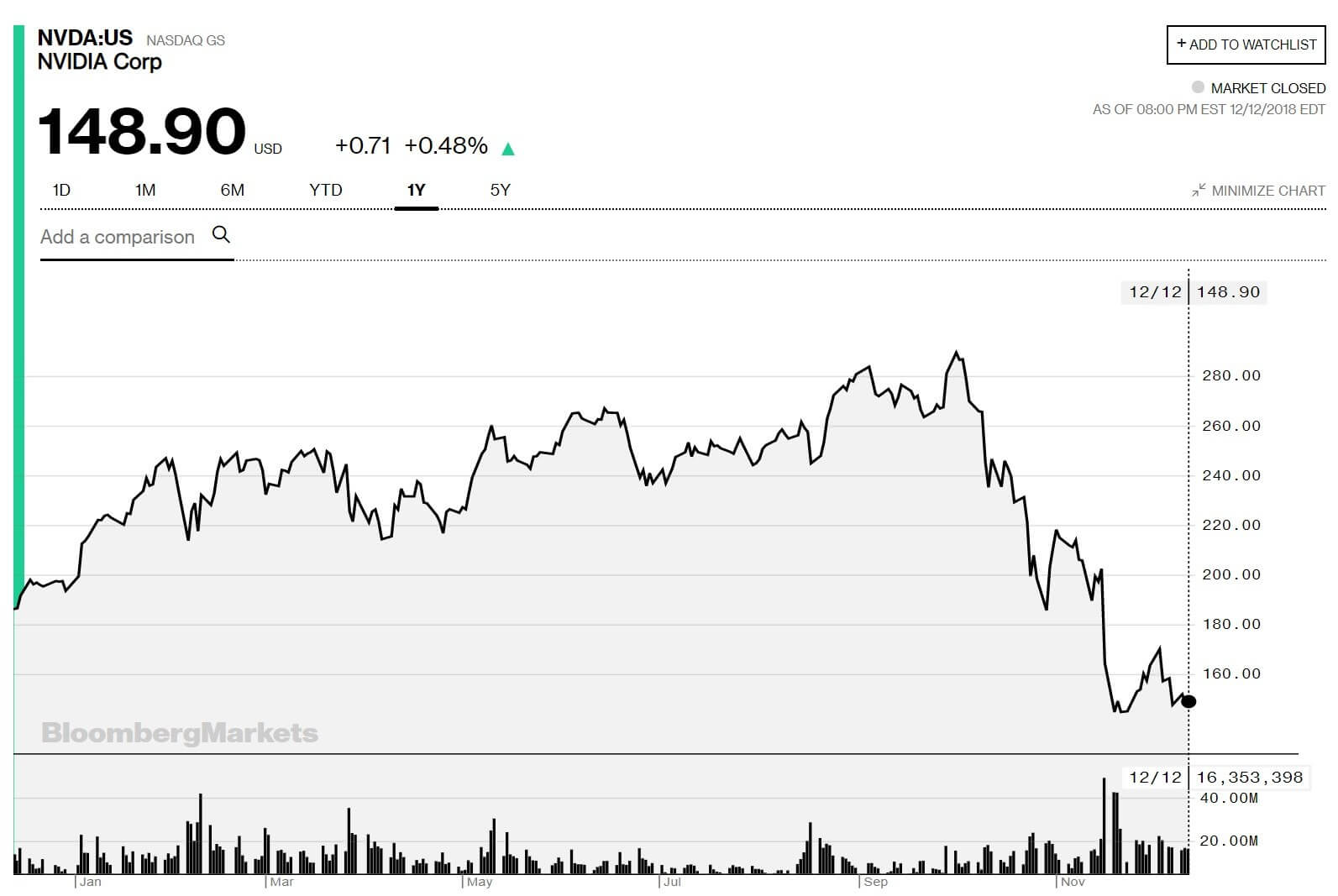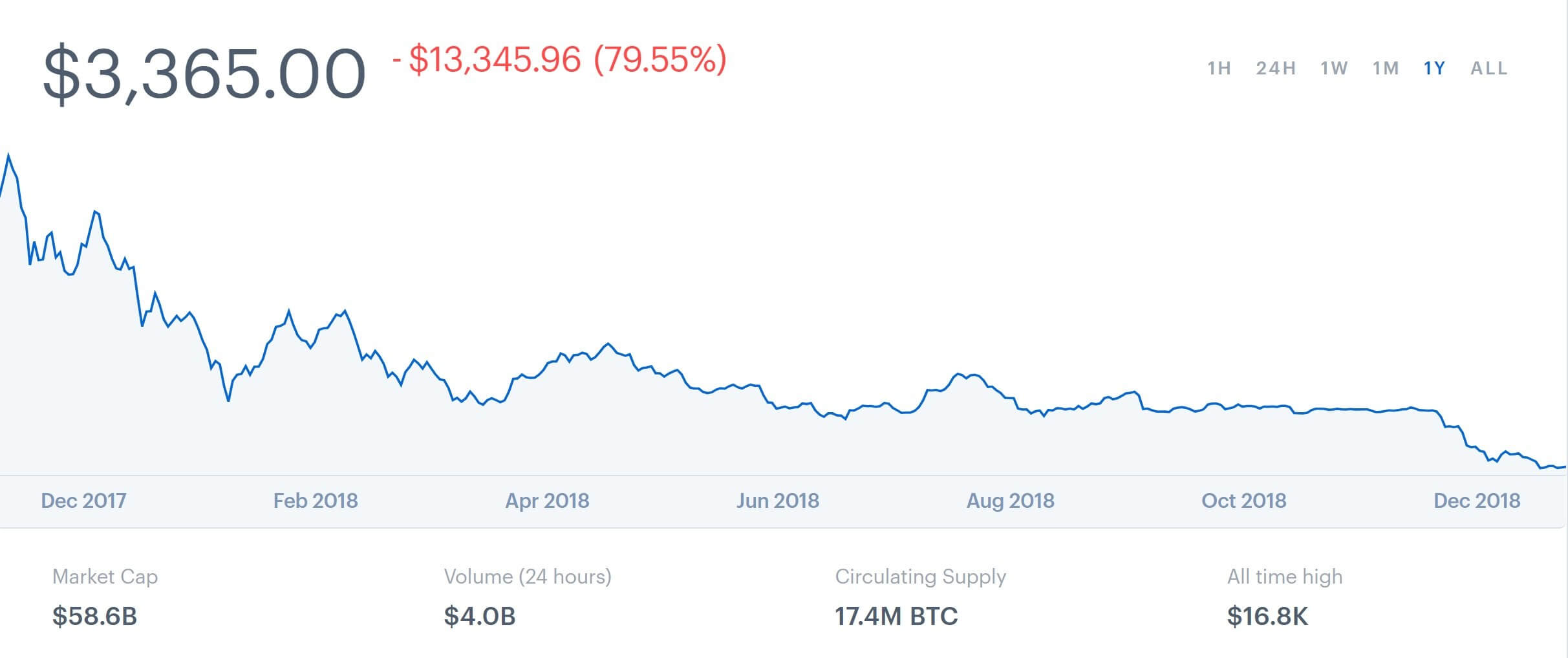In brief: For those who aren’t invested in the industry, the cryptocurrency crash came as good news: it meant an end to obscenely priced graphics cards. But for Nvidia, the “crypto hangover” has seen the company’s stock fall by almost half its value—and major investor Softbank wants out.

Since reaching an all-time peak of $289.36 on October 1, the chipmaker’s stock has fallen 48.8 percent to just under $149. Signs of this plummet appeared a few weeks ago when Nvidia’s share price reached its lowest point since July 2017 as Bitcoin dropped to $3755—the crypto is currently at $3365.
Nvidia's share price over the last year
Nvidia admits it failed to predict the decline of cryptocurrency mining, which was a major contributor to the company’s record quarters. Overestimating demand from miners has left the firm with an overstock of GTX 1060 cards, which could delay the release of mid-range Turing cards, but having “excess channel inventory” isn’t its only problem.
Bitcoin's price over the last year
Nvidia is facing increased competition in its other businesses, and the US-China trade war is hitting it hard. The Wall Street Journal notes that 20% of the company’s $9.7 billion revenue last year came from China. There’s also the RTX 2000-series, which has been criticized for its high prices. The dearth of real-time ray tracing games hasn't helped the cause, either.
But things could get even worse for Nvidia. A Bloomberg report citing unnamed sources claims that Softbank Group, Nvidia’s fourth-largest shareholder, is considering selling its stake in the company next year, bringing the Japanese conglomerate $3 billion in profit. The potential move is said to have been prompted by Nvidia’s falling share price, which dropped again on the back of the news.
https://www.techspot.com/news/77842-nvidia-shares-lose-half-their-value-softbank-looks.html

